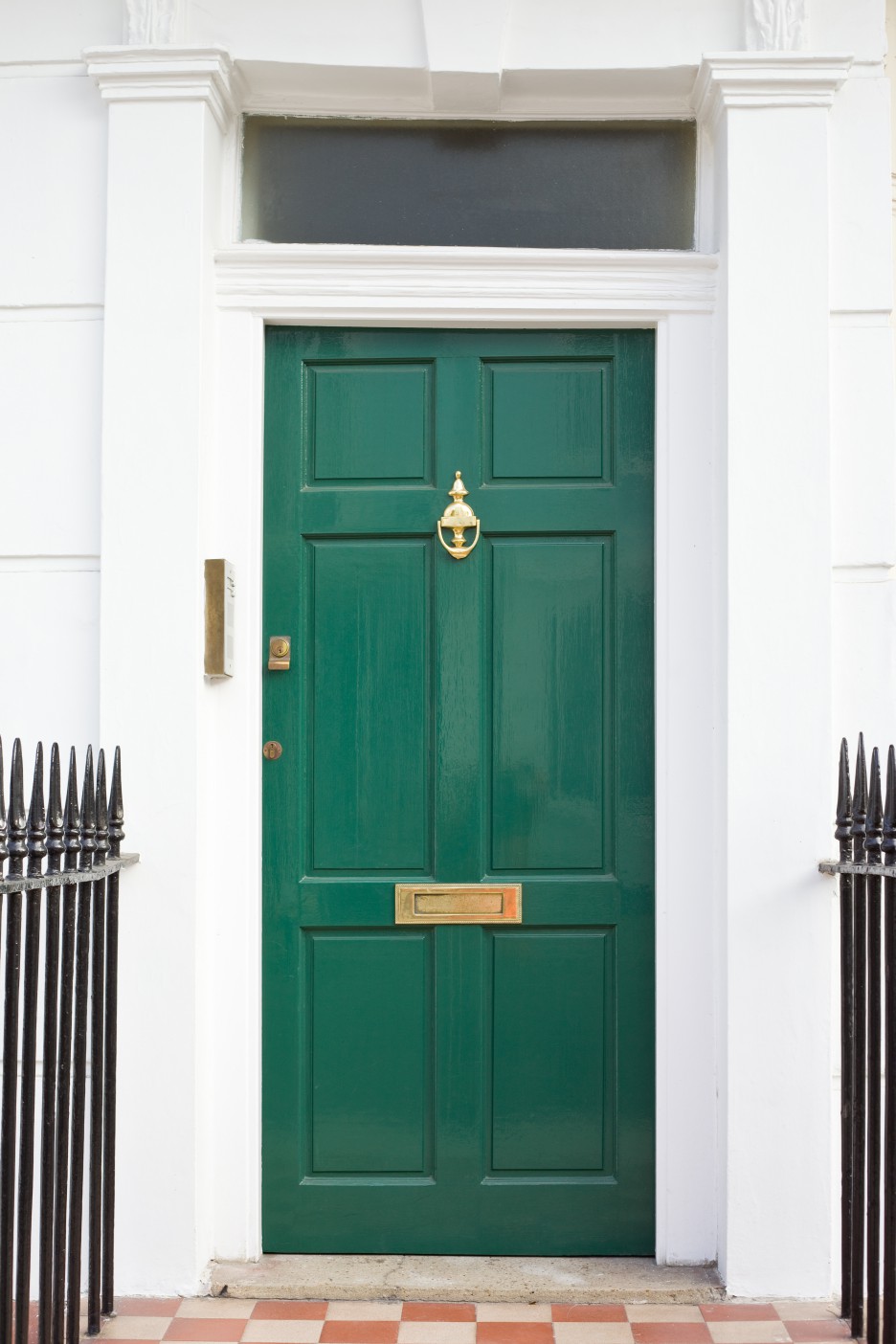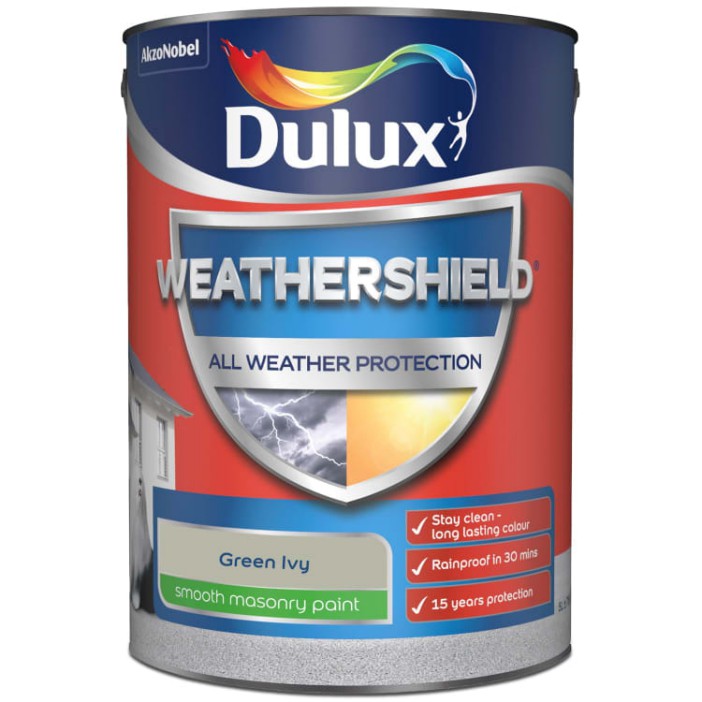
Make a Strong First Impression
The initial appearance of your home plays a crucial role in attracting potential buyers. The exterior, especially the front door, is the focal point that sets the tone for what lies inside. A worn-out or outdated front door can deter buyers even before they enter the property.
Affordable Paint Solutions
Instead of investing in a new door, a fresh coat of paint can significantly enhance your home's appearance at a fraction of the cost. According to Halifax, updating your entrance could increase your property's value by up to 10 percent. For a home priced at £298,602, this means a potential increase of nearly £30,000.
B&M offers a great deal with Dulux Weathershield Smooth Masonry Paint in a five-litre tin for just £30, translating to £6 per litre. Given that approximately 750ml is sufficient for a single door, this provides an economical option for homeowners looking to refresh their property's exterior.
Additionally, near Wickes stores, the same paint is available with a 20% discount, reducing the price to £28 for a five-litre tin.

Choose the Right Colour
The colour you select can influence buyers' perceptions of your home. While bold colours like red have been shown to increase selling prices—homes with red front doors can sell for £413,279, which is 36% above the national average of £290,003—neutral tones such as white and grey tend to appeal to a broader audience.
Estate agents emphasise that the front door is a key element of your home's curb appeal. Heather Carter-Drake from estate agency Hamptons notes that the door's appearance can significantly impact a potential buyer's interest within the first 20 to 30 seconds of viewing the property.
Invest in Quality Tools
To achieve a professional finish, investing in quality paintbrushes is essential. Home Bargains offers budget-friendly options starting at just 99p. The Spear and Jackson Select Pro brush, available for £1.99, is an excellent choice for painting your front door.
Maximise Your Investment
By spending as little as £6 on paint and a few hours of your time, you can enhance your home's appearance and potentially increase its market value by thousands of pounds. This simple renovation is a cost-effective way to make your home more appealing to buyers.

Real-Life Success Stories
Across the UK, homeowners have successfully increased their property's attractiveness through similar DIY projects. One local resident transformed her council house's front door for under £10, resulting in a stunning entrance that effectively hides unsightly winter grime.
These practical updates not only make your home look well-maintained but also contribute significantly to its marketability and selling price.
Frequently Asked Questions
What are the different types of money?
The main types of money include commodity money, which is based on physical goods like gold or silver; fiat money, which is government-issued currency not backed by a physical commodity; and digital currency, which exists electronically and is often decentralized, such as cryptocurrencies.
How does inflation affect the value of money?
Inflation refers to the general rise in prices over time, which erodes the purchasing power of money. As inflation increases, each unit of currency buys fewer goods and services, meaning that the value of money decreases in terms of what it can purchase.
What are the risks associated with investing in the stock market?
Investing in the stock market involves several risks, including market volatility, economic downturns, and company-specific factors that can lead to losses. Investors may also face liquidity risk, where they cannot sell an investment quickly without incurring a loss. Diversification and thorough research can help mitigate these risks.
How can I budget my money effectively?
To budget effectively, start by tracking your income and expenses to understand your spending habits. Set realistic financial goals, categorize your expenses, and allocate funds accordingly. Regularly review and adjust your budget to ensure it reflects your current financial situation and objectives.
What is the definition of money?
Money is a medium of exchange that facilitates transactions for goods and services. It serves as a unit of account, a store of value, and a standard of deferred payment, allowing individuals to compare the value of diverse products and services.
What is the role of central banks in the economy?
Central banks manage a nation's currency, money supply, and interest rates. They implement monetary policy to control inflation, stabilize the currency, and foster economic growth. They also serve as lenders of last resort to the banking system during financial crises.
What is the difference between saving and investing?
Saving typically involves setting aside money in a secure account for short-term needs or emergencies, while investing involves using money to purchase assets like stocks or real estate with the expectation of generating a return over the long term. Investing carries higher risks but offers the potential for greater rewards.
Statistics
- In 2020, the average retirement savings for Americans aged 60 to 69 was approximately $195,000, according to Fidelity.
- According to a survey by the Financial Industry Regulatory Authority (FINRA), about 66% of Americans could not correctly answer four basic financial literacy questions.
- According to a Gallup poll, 56% of Americans report that their financial situation is better than it was a year ago.
- As of 2021, the average American household had approximately $8,400 in credit card debt, according to Experian.
- As of 2021, the average student loan debt for recent graduates was approximately $30,000, according to the Federal Reserve.
- Research by the National Bureau of Economic Research found that individuals who receive financial education are 25% more likely to save than those who do not.
- The average return on investment for the S&P 500 over the past 90 years is about 10% per annum.
- The average cost of raising a child in the U.S. is estimated to be around $233,610, according to the U.S. Department of Agriculture.
External Links
How To
How To Improve Your Credit Score
Improving your credit score is a gradual process that requires consistent effort. Start by obtaining a copy of your credit report from the major credit bureaus to identify any inaccuracies or negative entries. Pay your bills on time, as payment history accounts for a significant portion of your credit score. Reduce your credit card balances to maintain a low credit utilization ratio, ideally below 30%. Avoid opening new credit accounts frequently, as this can negatively impact your score. Lastly, consider becoming an authorized user on a responsible person's credit card to benefit from their good credit habits. Regularly monitor your credit report to track your progress.
 PoliticsRoyaltySoap OperaGamingMoneyPrivacy PolicyTerms And Conditions
PoliticsRoyaltySoap OperaGamingMoneyPrivacy PolicyTerms And Conditions
